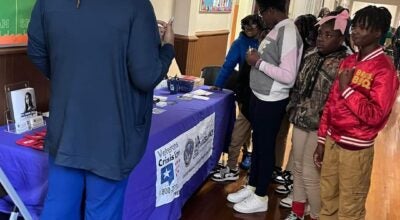Lowndes study fails to prove hookworm infection
Published 9:30 pm Wednesday, September 12, 2018
|
Getting your Trinity Audio player ready...
|
By Fred Guarino
The Lowndes Signal
The following statement was sent to The Lowndes Signal on Wednesday, Sept. 12 from Dr. Mary G. McIntyre of the Alabama Department of Public Health:
“Notice: Environmental study in Lowndes County, Alabama, fails to prove hookworm infection.
“A recent published study of hookworm disease in rural Alabama did not achieve statistical significance.
“The Alabama Department of Public Health (ADPH) has reviewed the study, “Human Intestinal Parasite Burden and Poor Sanitation in Rural Alabama,” published in the November 2017 issue of American Journal of Tropical Medicine and Hygiene.1
“This study used an experimental technology that was not FDA-approved in order to determine whether hookworm genetic material could be identified in stool specimens of residents who resided in Lowndes County, Ala.
“ADPH was actively involved in the development of the study, which was approved by the Baylor University and ADPH Institutional Review Boards.
“The authors concluded that the study did not obtain statistical significance.
“In an attempt to validate the results of the study, nine (9) of 20 individuals identified as positive in the study submitted specimens for additional testing via microscopy for ova and parasites (O & P), which is the benchmark confirmatory testing procedure. This confirmatory testing was performed by the Centers for Disease Control and Prevention (CDC). All specimens tested were negative for O & P, and thus no evidence of hookworm infection was found in any of the residents of Lowndes County who were tested.
“While ADPH continues to monitor the counties in the West Central and Southwestern districts of Alabama for evidence of gastrointestinal (GI) outbreaks, there is currently no evidence of an increased incidence of GI outbreaks in these ADPH Districts (which include, among others, the counties of Lowndes, Dallas, Hale, Perry, Wilcox, Marengo, Choctaw, and Sumter) than in other parts of Alabama.’
Montgomery, Alabama, April 9, 2018
Contact: Dr. Mary G. McIntyre, (334) 206-5200
1. Am J Trop Med Hyg. 2017 Nov;97(5):1623-1628. doi: 10.4269/ajtmh.17-0396.
Dr. Mcintyre said, “The Alabama Department of Public Health (ADPH), did not conduct our own study. The Ova and Parasite (O&P) testing performed was part of the original study design and thus part of the Baylor study. This study plan was approved via the Baylor and ADPH Institutional Review Boards (IRBs).”
She said, “The Baylor study involved testing using an experimental methodology that was not FDA approved and included a requirement to include the gold standard testing by O&P as part of the study design and validation process.”
She said, “The conclusion of Baylor’s own published study is that it was not statistically significant. There were also limitations to the interpretation of the study results with a smaller than needed study population.”
Mcintyre said, “The study that was IRB approved indicated the need for initial testing of 100 people. This was not achieved. Because the O&P testing performed was negative, there was no ability to validate the testing performed. “





